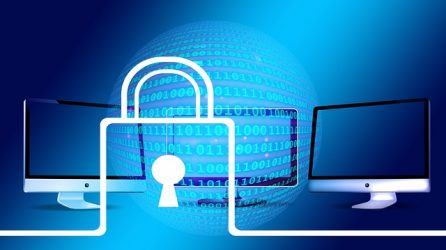Managing Intranet Security with a Remote Workforce

Intranet Security
Have a remote workforce? You’re not alone. Studies show that this is a rapidly increasing trend, with more and more employers, large and small alike, allowing their employees to telecommute, or work remotely, at least some of the time. There are many companies, even relatively large ones, that are entirely or nearly entirely virtual, meaning that most, if not all, of their employees work from home. And many employees across all sorts of industries are more mobile than ever before, meaning they are working from mobile phones and tablets when they aren’t sitting in front of their desktops. All this means that intranet security is becomingly increasingly important as our world becomes an ever-more mobile, connected place.
By the Numbers
A 2017 report by Global Workplace Analytics noted the following:
- Approximately 20-25% of the workforce teleworks at some frequency
- Fortune 1000 companies are revamping their spaces in recognition that their employees are already mobile. Studies repeatedly show they are not at their desk 50-60% of the time.
- Among the non-self-employed population, the number of employees who regularly work from home has grown by 115% since 2005.
- Forty percent more U.S. employers offered flexible workplace options than they did five years ago.
The trend is hardly surprising, given how dependent we are on our mobile devices. And, happily, studies also show that mobile and remote connectivity can drive down costs, boost employee productivity and efficiency, heighten morale, reduce turnover. All this translates to a more profitable company—but ONLY if the downsides of this trend toward flexibility are addressed and managed with a network security plan.
Are There Disadvantages to Allowing Remote Employee Access?
Unfortunately, there is also a huge downside to increased employee mobility. An inherent lack of intranet security that typically exists when an employee accesses a corporate information network from a remote location. Allowing this kind of access creates a vulnerability point within your network that can easily be penetrated by hackers and cyber-crooks. Without the right safeguards in place, your telecommuter-friendly policy can quickly transform from your biggest asset into your worst nightmare.
How to Safeguard your Network in the Age of Mobility
- Segment Your Network: One of the first, and easiest, steps you can take to increase remote intranet security is to segment your company’s data. Let’s say you run a PR firm. Do each of your account managers (AMs) need access to the agency’s files on clients managed by other AMs? Nope. Run an insurance company? Does each employee need access to every customer’s files? Certainly not. Most employees won’t need access to software applications specific to a single department either. The reality is that most employees won’t need unfettered access to every file, folder, and application. Only allow users access to the data and systems they need to perform their specific jobs.
- Protect Remote Devices: Allow users to access the company network only from company-owned devices, which you can much more easily control. Add safeguards such as strong passwords, GPS tracking, remote deletion, managed anti-virus and anti-malware protection. And don’t allow users to connect to company data via public (unsecured) wi-fi networks. Can’t afford to provide all your remote employees with company devices? A strong usage and access policy and regular employee education are essential to improving intranet security. You should also provide your employees with specific requirements for remote workstations (see below).
- Work with Your Workers: As mentioned, it’s critical that you educate employees regarding intranet security and its importance (check out our previous post on getting employees to buy in) as well as create a strong, yet easily understood access policy to guide users in how to safely log in to company systems. Ensure they understand that telecommuting is a privilege, one that requires trust. In addition, you’ll also want to work hard to foster a company culture based on mutual respect and appreciation. While this is always important, it becomes especially critical when you’re relying on remote employees to follow your directives, remain productive, and put the company’s needs first.
- Go to the Cloud: Cloud computing providers allow users to access networks remotely via the cloud, and this allows you to hand off remote intranet security to cloud-service providers, who are typically better equipped than your average small business to keep networks secure. Is the cloud right for you? Maybe. Check out our post on cloud computing to help you make an informed decision on implementing cloud-based technology as a means of increasing remote intranet security.
- Secure the Bridge: Of course, the best intranet security systems rely on layers of protection to safeguard data. That’s where network access security solutions come in. These are tools and technologies that exist to protect the network at bridge over which remote devices access the company network. They only allow devices that meet stringent security requirements to connect. Once a user is admitted to the network, these tools also monitor and control the user’s access to company systems and data. If you don’t have a cloud-based network, one tool that can help you create a secure bridge is virtual private network (VPN) software, which can encrypt remote users’ internet traffic so no one can hijack the connection.
Is Allowing Remote Workforce Access to Your Network Right for Your Company?
Despite the trend toward telecommuting and the obvious benefits, there are also significant challenges in managing intranet security with a remote workforce. The nature of your company, the sensitivity of your data, and the company culture that exists must be carefully considered. Similar to choosing the right ISP, the advantages must be weighed against the potential drawbacks. Companies like Real IT Care specialize in helping small and medium-sized businesses make just these kinds of decisions. Once a decision has been made, we can implement solutions that will enable your company to be more productive, efficient, and secure, whether you offer employees remote access or not. Give us a call today to discuss your remote intranet security concerns.

